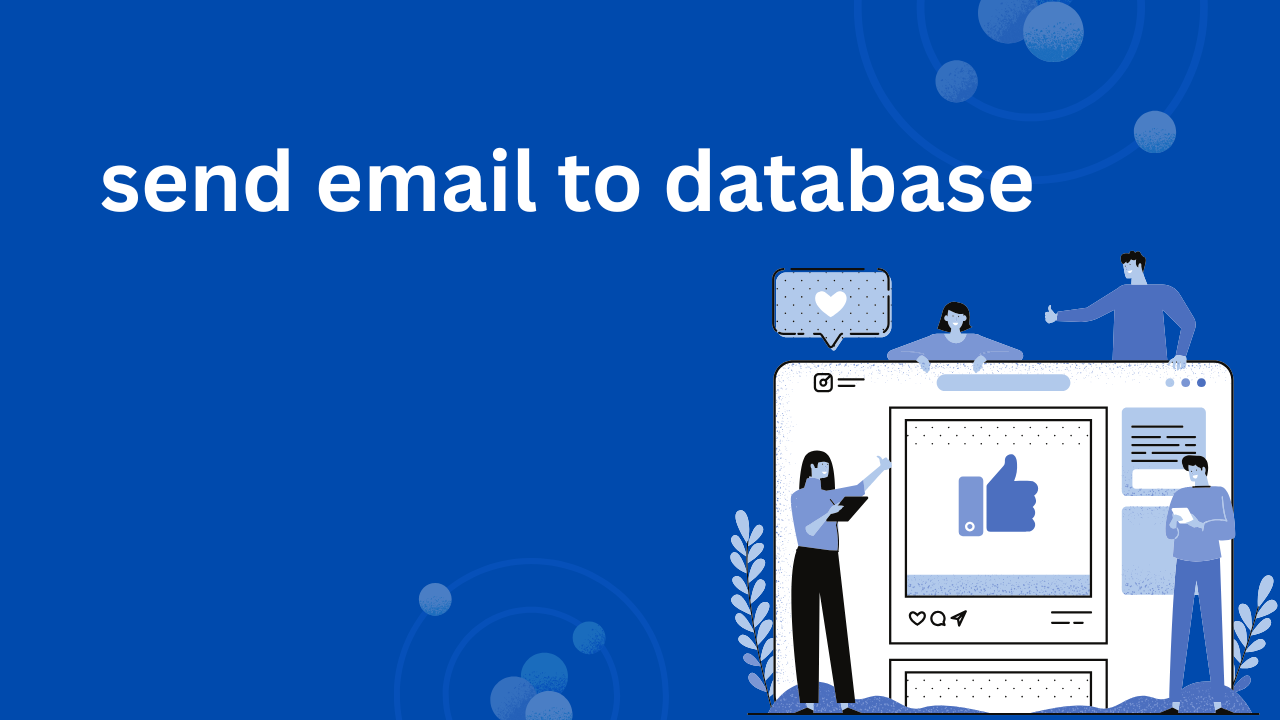Why is Sending Emails to a Database a Smart Idea?
Saving emails to a database is a great idea for many reasons. First, it helps keep everything organized. Think of a big company with thousands of customers. They get a lot of emails every day. Without a database, it would be a huge mess. A database sorts all these emails neatly. It puts them in different folders or tables. This makes finding old emails very easy. It's like having a digital librarian for all your messages.
Second, a database keeps your data safe. Imagine if a computer shop suddenly crashed. All your important emails could be lost forever. A database has backup copies of all the data. This means if one copy is lost, there are others to use. This protects against accidents and data loss. It's a very reliable way to store information.

Third, a database makes it easy to use email data. Companies can see trends. They can find out what people are asking about most often. This helps them improve their products and services. They can also send automated replies to common questions. This saves a lot of time for everyone.
The Steps to Get Emails into Your Database
So, how does an email actually get into a database? It follows a few simple steps. First, an email is sent from a person's computer. It travels across the internet to a special server. This server is called an email server. Think of it as a post office for emails. The email server receives the message. Then, it starts the process of putting the email into the database.
Next, the email server hands the email over to another program. This program is like a special worker. Its job is to read the email and get the important parts. It looks for things like who sent it, the subject, and the message body. It takes all this information out of the email. After that, it gets ready to store it.
Finally, the program sends the information to the database. It uses a special command to do this. This command tells the database where to put the new information. The database then saves the data in a table. Each part of the email has its own spot. For example, the sender's email might go in one column. The subject would go in another column. This makes it very easy to find later.
A Deeper Look at the Technology
The special program we mentioned is often called an email parser. A parser is a program that breaks down data. In this case, it breaks down an email. It takes the big email and splits it into small, usable pieces. For instance, it separates the sender, receiver, subject, and body. It might also look for attachments. Then, it gets ready to put each piece in a specific place.
The database itself is made of tables. A table is like a spreadsheet with rows and columns. Each row is a single record, or in our case, a single email. Each column is a field. For example, one column might be "sender_email." Another column could be "subject_line." This structure makes it super easy to search and sort.
The Role of a Script
A script is a set of instructions. It's like a recipe for a computer. A script tells the email parser and the database what to do. For example, a script might say: "When a new email arrives, get the sender's name and email. Then, get the subject. Next, get the message text. After that, put all this information into the emails table in the database."
Scripts are written in special computer languages. Common languages for this are PHP, Python, or Ruby. These languages are powerful. They help automate the whole process. This means that once the script is set up, it works by itself. You don't have to do anything. It automatically saves every email that arrives.
Getting Ready: The Setup
Before you can start saving emails, you need to set things up. First, you need a database. A popular choice is MySQL or PostgreSQL. You also need a web server. This server will run the script we talked about. Finally, you need to connect the email server. You must tell it to send emails to your script.
Setting up the database is the first step. You create a new table for your emails. You need to decide what columns to have. For example, id, sender_email, subject, and message_body. These columns will hold all the email information. The id column is very important. It gives each email a unique number.
Connecting the Pieces
Connecting everything is the final step. The email server needs to be configured. It has to know to forward emails to your script. The script then takes over. It reads the incoming email and extracts the data. Then, it uses the database connection to save the data. It's a chain of events. One thing happens after another. This makes the whole process very efficient.
In conclusion, sending emails to a database is a powerful tool. It helps with organization, security, and analysis. The process involves an email server, an email parser, and a database. A script ties it all together. It's a great example of how technology works together to solve problems. It's a system that many companies rely on every day.